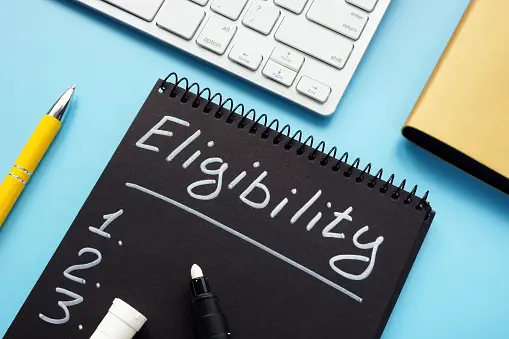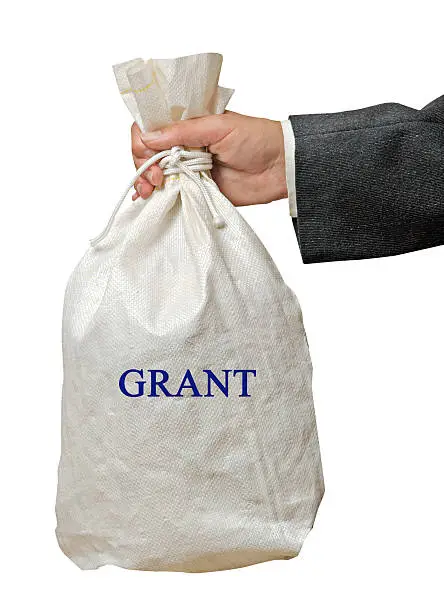Grant Proposal Cover letter is an introductory letter used to persuade grant making agency about your organization and proposed project. You use cover letter to introduce your organization and proposed project. It helps to create first impression about your organization before funding agency. It is very paramount that you use this moment of crafting your cover letter to input key points that help to establish how your proposed project aligns with the donors’ priority area. You can handle this by showing that your organization and that your mission aligns with the funders area of focus and also you understand what the funder is looking for. Mastering how to craft a winning cover letter is an art because you have just one page to express your intent. Note that grant proposal cover letter is different from grant proposal cover page.

When do you include a Cover Letter?
Cover letter should be included when funding agency demands for it. Corporations and foundations are most likely to request that you submit a cover letter or include it in your proposal. For State and Federal government grants, a cover letter is not included.
Characteristics of a Winning Cover Letter
A winning cover letter should be;
- Brief as possible.
- Straight to the point, positive and confident.
- Concise and inviting to the funder.
- Aligns with the funder agenda and address issues that are at the heart of the funder.
How to Write a Cover Letter for a Grant Proposal?
To write a cover letter that will arouse the interest of the funder, the below steps will guide you;
- Use formal letterhead. Your organization letterhead that contains your contact information should be used. Then add date that you will send the letter and the recipient’s contact information.
- The next step is to introduce your organization. Here you provide an overview or background of what your organization does and its purpose. When introducing your organization, specifically mention the name of your organization, your mission and the community and target populations you serve.
- Then you should state the title of your proposed project, its purpose and how you intend to implement it.
- Now that you have given a comprehensive overview of your organization and the proposed project. The next thing is to explain the reasons why you are seeking their funding, the proposed project budget, how you plan to use the fund.
- Then go ahead and emphasize the impact of the potential funding and how their contribution will impact your cause or project. Ensure that you include the project outcome and the beneficiaries of the project. Stating these 2 factors will go a long way to persuading funders to fund their project if they see how their contributions will enable your organization address the identified problem and target populations that will benefit from the project.
- Close your letter with a note of appreciation. The ‘thank you’ for the opportunity to submit the project and the contact person information. Then include the executive director personalized signature at the bottom of the letter
- Note: Your cover letter should be one page and probably consists of four paragraphs.
How to Format your cover letter?
Follow the steps below to format your cover letter. The steps include;
- Use your nonprofit organization letterhead.
- Use a current date for submission.
- Make your cover letter one page consisting of about 4 paragraphs.
- Express your letter in a clear and concise manner for easy comprehension.
- Ensure you research your donor very well and get the appropriate contact person to address the letter to.
- Place the details of the donor contact person (including name, title, name of donor agency and address) on the top left of your cover letter as the addressee.
- Use formal salutation e.g. Dear Mr./Mrs./Miss.
- The first paragraph of your title should introduce your organization, mission, purpose, community and target population you serve.
- Use the second paragraph to discuss about your proposed project, budget and everything you need to tell the donor. Indicate how your work aligns with the funder’s priorities.
- Don’t forget to mention the purpose of the proposed project, its impact and beneficiaries. Make sure to mention your accomplishment if the donor has previously contributed towards your project.
- Thank the donor for the opportunity to submit the proposal and include your organization contact person information.
- Use statement such as; I look forward to discussing more about this project with you.
- Ensure that the letter is duly endorsed by the Executive Director.
Rules guiding writing grant proposal cover letter:
Rule 1: Write your cover letter in a manner that is professional, clear, and concise.
You have to sound professional, clear and concise when writing your cover letter. Remove anything that will make it sound casual and not serious. Avoid jargons and ensure that your information flows succinctly and easy to comprehend.
Rule 2: Ensure that your cover letter stand out from the pack.
Funders receive over a hundred cover letters each year and so it is very important you distinguish yourself from the rest of the letters they receive. Focus more on your organizational strength and demonstrate your capacity to implement the proposed project and discuss about your past accomplishments.
Rule 3: Research about the donor organization properly to get to know the appropriate contact person before crafting your cover letter.
Ensure you have the appropriate contact person to address the letter to before you commence writing your cover letter. This helps to boost your chances of success and donors would believe you did your research properly.
Rule 4: Write your cover letter after writing your grant proposal.
Having a completed grant proposal before you start writing your cover letter will help you include the essential points in the cover letter and help you positively communicate your proposed project in a persuasive manner and confidently
Rule 5: Your cover letter should summarize your proposal.
Your cover letter should be brief and concise and should not copy your proposal word to word. Simply summarize your proposal consisting of about 4 paragraphs. The cover letter should contain introduction of your organization and proposed project. What you are trying to achieve is to establish that first impression and arouse the interest of your funder to go ahead with your full proposal.
Rule 6: Submit a cover letter when requested by funding agency.
Cover letter is meant to be submitted whenever funding agency or donor request for it. Most times foundations and corporations request that nonprofits first submit cover letter before the full grant proposal unlike for government grants.
Rule 7: Proofread your grant proposal cover letter before submission
Don’t be in a haste to email or mail your cover page without checking out if there are grammatical errors. Have another person or persons in the organization go through the cover letter before submission. The key factor is to ensure your cover letter stands out from the pack.
Sample Cover Letter
NEXT YOUTH FOUNDATION
No. 122 David Street,
Spartanburg, South Carolina 222222
(date)
Mrs. Florence Michael,
ABC Foundation,
No. 12 Douglas Road,
Spartanburg, SC 22222
Dear Mrs. Florence,
Next Youth Foundation is a youth based nonprofit organization in Spartanburg, South Carolina requests to submit the enclosed proposal for the Youth Empowerment Outreach for your consideration. With a current youth membership base of 5,000, Next Youth Foundation has been serving Spartanburg most vulnerable youth between the ages of 15 to 35 years for 10 years with the mission of helping young people harness their potentials and succeed in life by providing programs in five basic areas: 1) Entrepreneurship 2) leadership 3) career readiness 40 sexual and reproductive health 5) education.
We share the ABC Foundation’s concern about youth empowerment and capacity development in South Carolina. The proposed Youth Empowerment Outreach is a localized, collaborative effort to address issues of unemployment and lack of access to opportunities facing young people in Spartanburg. It is our hope that the proposed pilot project will provide new models for effective youth empowerment interventions. We are requesting $50,000 to help seed the twelve-month intervention.
Next Youth Foundation developed the Youth Empowerment Outreach in response to high rate of youth employment and social vices witnessed in Spartanburg. About 75% of these young people are without any means of livelihood and this has resulted increased in crime rate in this community. Our proposed project adopts an innovative approach in addressing this problem and 100 of vulnerable, economically disadvantaged youth between 18 -25 years will be enrolled into the program. Following recruitment, the enrolled youth will be trained on different employability skills for six months after that they will be linked to job recruitment agencies where they will be placed on paid internship.
Next Youth Foundation thanks ABC Foundation for its interest in our proposed project and looks forward to talking with you further about this project. For more information, contact Michelle David at (111) 111-1111 or michelle@nextyouthfoundation.org
Sincerely,
Sandra Smith
Executive Director
Next Youth Foundation





